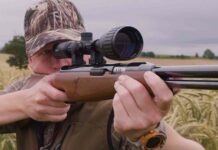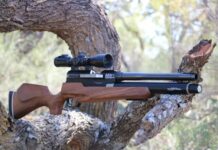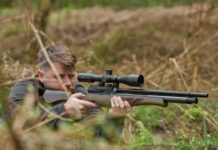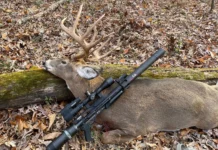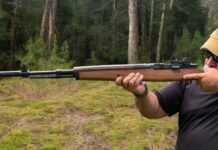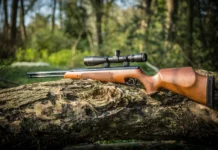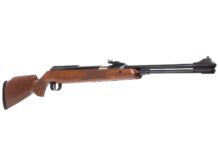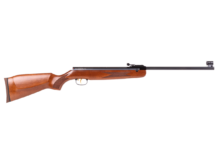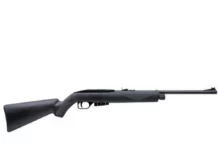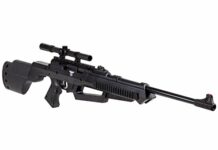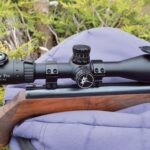The fact that the wizened .22 Hornet remains popular in the twenty-first-century defies logic. Modern introductions like Hornady’s .17 Hornet or Armscor’s .22 TCM easily outshine it. Still, when Taurus released their Raging Hornet revolver in 2002, I had to own one. Locating one took time, as not a lot of them were made (1,000 I’ve heard but never confirmed). That alone might make this test series superfluous, if not for the existence of untold numbers of .22 Hornet single-shot T/C Contender barrels, for which these handloads should serve well.

The Raging Hornet was built on the super-stout, double-locking Raging Bull frame engineered for the .454 Casull. With the Raging Hornet, the issue isn’t strength – it is more than robust enough to handle the hottest factory loads – but reasonable ejection of fired cases, and especially accuracy. Shooting just a few hot rounds through the Raging Hornet can result in sticky ejection, a full eight-round cylinder requires knocking hulls out with something more resilient than the heel of your hand. In addition, excessive muzzle flame is hardly conducive to top-grade accuracy. Getting the best from this handgun, and Contender single shots, requires handloading.

Since I use my Raging Hornet for shooting burrowing rodents, proper bullets are critical. Long, polymer-tipped bullets used to get the most from my .22 Hornet rifle require seating into the ogive to create an acceptable overall loaded length (OAL) for the revolver cylinder. A 1.77-inch OAL is the outer limits with this revolver; 1.68 to 1.70 is a safer baseline. With only 10 inches of barrel to generate pressure, and the Hornet’s already lumbering pace, bullets must also expand adequately at lower velocities to prove viable for varmints. This indicates stumpy polymer-tipped or hollow points, in lighter weights to boost velocities. Nosler and Hornady’s 35-grain Ballistic Tip Varmint and V-MAX, respectively, have proven ideal Raging Hornet choices. I’ve also used them to collect coyotes and a number of moderate-sized hogs. To determine if I’ve been missing something, Barnes’ 30-grain Varmint Grenade, MidwayUSA’s 34-grain Dogtown HP, Sierra’s 40-grain Varminter Hornet and Hornady’s 45-grain HP/BEE were added.
Many standard .22 Hornet rifle powders serve Hornet handguns, with a few true pistol powders providing more flexibility by burning completely in shorter barrels. Hornet standbys (technically pistol powders) include Winchester 296, similar Hodgdon 110, Vihtavuori N110 and Alliant 2400. True pistol powders such as Accurate Enforcer, No. 9 and No. 11FS were added, as well as fast-burning rifle powders like Hodgdon’s Lil’Gun and IMR-4227 and IMR-4198. Course-grained Accurate 5744 was added out of curiosity.

The .22 Hornet, even from rifles, is frequently labeled as inherently inaccurate. In fact, it’s simply an extremely tedious cartridge to load consistently. Small powder charges make even a tenth of a grain highly significant, so every load must be carefully hand-trickled to enjoy satisfying accuracy. Handgun loads accentuate this problem due to even lighter charges of hotter powders. Primer selection also factors. The Remington 7½ Bench Rest Primers used here have proven reliable on average, but there’s no doubt better accuracy could be realized with individual powders, loads, brass and firearms by using different spark plugs. Some combinations do best with small pistol or even magnum small rifle primers. Small variables in brass thickness also dictate results, so always match brass headstamps. Remington and Winchester generally include the thinnest walls, Hornady slightly thicker, PPU is traditionally thickest, in my experience. As wall thickness increases, so do resulting pressures from same weight powders charges.

The Hornet’s sloping shoulders and thin necks flow freely, requiring frequent trimming to maintain proper specs (trim-to specs 1.393 inches). Note: necks can be trimmed shorter – creating a case length of 1.37 inch to accommodate longer bullets without seating into the ogive – without ill effects. Finally, because the Hornet headspaces off the prominent rim, seating bullets, so they just touch the lands, helps better align them straight down the barrel – though this is a luxury not afforded a revolver and its backset cylinder and forcing cone. Add all these factors together and it’s easy to see why you’ve never heard anyone bragging about their one-hole-group .22 Hornet. Despite these factors, I’ve generally done pretty well on spring ground squirrels with my Taurus revolver, as long as I use a rock-steady rest and limit shots to less than 100 yards (a Contender single-shot pistol would likely extend this range 50 yards). All load testing with the revolver was conducted at 75 yards.
